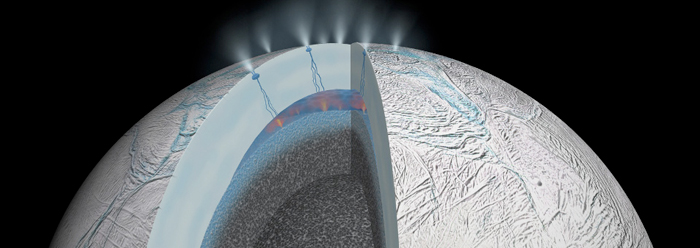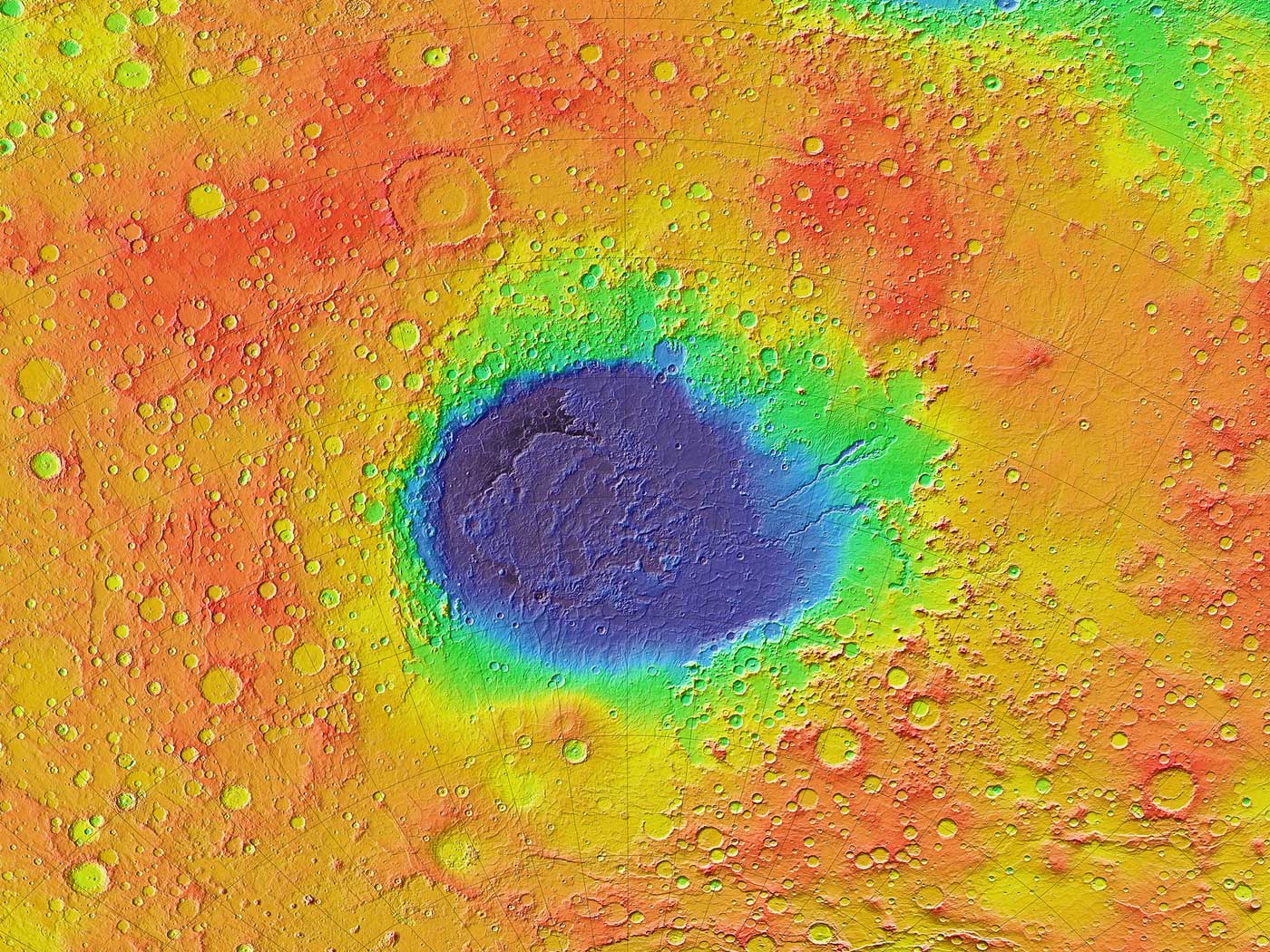The more we learn about Enceladus, the younger it looks. Stated another way, the more that our space probes discover about this fascinating little moon that inhabits Saturn's tenuous E ring, the more challenging it becomes for conventional origins to explain. A new discovery adds to the list of young-looking Enceladus features.
The most stunning feature of Saturn's sixth largest moon is undoubtedly its water-ice plumes. The Cassini spacecraft passed by Enceladus several times in 2005 and captured amazing images of these continuous jets. They discharge material and send about a dozen plumes tens of miles into space from the moon's south pole.1 Enceladus, which would span the breadth of Arizona if it were placed on Earth, simply does not have enough material in it to supply these plumes for 4.5 billion years—it's physically impossible. A NASA article written in 2008 revealed no new answers, saying, "What causes and controls the jets is a mystery."2
Then in 2014, Cassini took an even closer look. It found that instead of a dozen plumes, Enceladus has 101 of them. Researchers deduced from these clues that the plume's water ice comes from hot water found below the moon's frozen surface. Not only do Enceladus' jets keep ejecting watery material, but they continually release internal pressure. Clearly, this moon could not have been powering these hot plumes for billions of years.3 The math doesn't work.
Meanwhile, Cassini measured Enceladus' heat output, published in 2011. After billions of years it should have lost its heat. Yet, secular researchers found it emits over ten times the expected heat.4 So, Enceladus loses water, water pressure, and heat. No good explanation yet fits these observations into evolutionary time.
New research published in the journal Nature reveals its plumes of mostly water-ice also eject silica.5 "Silica" is short for silicon dioxide, an abundant compound in our solar system. Scientists know that silica grains— the size found in Enceladus' plumes—also form in certain hydrothermal vents on Earth. The Nature authors reconstructed the conditions under which this silica likely form, which the NASA Jet Propulsion Laboratory News said is "when slightly alkaline and salty water that is super-saturated with silica undergoes a big drop in temperature."6 Where did all the silica come from that saturates this moon's subsurface sea and keeps jetting into space?
New measurements also show the moon's south-pole plumes contain methane. Could Enceladus also have supplied this methane for billions of years?
Scientists publishing in Geophysical Research Letters modeled the conditions required for ice crystals to trap molecules like methane, finding that this moon could very well meet those conditions.7 "Their models indicate that this process is so efficient at depleting the ocean of methane that the researchers still needed an explanation for its abundance in the plume," according to NASA.6
They suggested that hot, flowing water at depth supplies methane to the plumes. But even a moon-sized methane fountain cannot run forever.
One way to explain how all this methane, silica, heat, water pressure and water persists in Enceladus is simply that God created Enceladus only thousands of years ago. Maybe it hasn't been hanging around Saturn long enough to have lost its original supplies. Recent creation thus solves all the mysteries that Enceladus' remarkably youthful features pose for its assigned billions of years.
References
- Coppedge, D. 2006. Enceladus: A Cold, Youthful Moon. Acts & Facts. 35 (11).
- Enceladus Jets—Are They Wet or Just Wild? Cassini Equinox Mission News. Posted on saturn.jpl.nasa.gov November 26, 2008, accessed March 12, 2015.
- Thomas, B. Solar System Geysers—Each a Fountain of Youth. Creation Science Update. Posted on icr.org August 8, 2014, accessed March 12, 2015.
- Heat of Saturn Moon Far Surpasses Long-age Expectations. Creation Science Update. Posted on icr.org March 21, 2011, accessed March 12, 2015.
- Hsu, H-W. et al. 2015. Ongoing hydrothermal activities within Enceladus. Nature. 519 (7542): 207-210.
- Spacecraft Data Suggest Saturn Moon's Ocean May Harbor Hydrothermal Activity. NASA JPL news. Posted on jpl.nasa.gov March 11, 2015, accessed March 11, 2015.
- Bouquet, A., et al. Possible Evidence for a Methane Source in Enceladus' Ocean. Geophysical Research Letters. 42 (5): 1334-1339.
Image credit: NASA/JPL-Caltech. Adapted for use in accordance with federal copyright (fair use doctrine) law. Usage by ICR does not imply endorsement of copyright holders.
*Mr. Thomas is Science Writer at the Institute for Creation Research.
Article posted on April 9, 2015.























